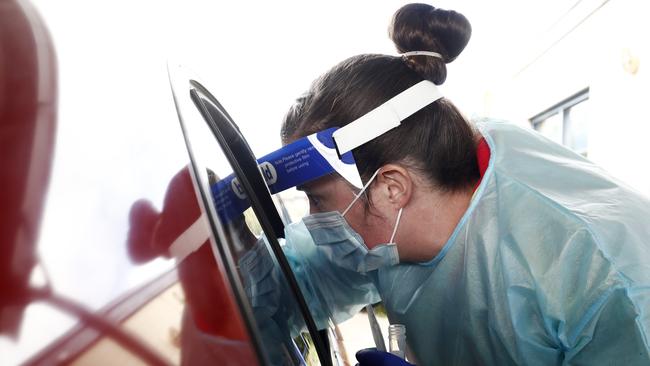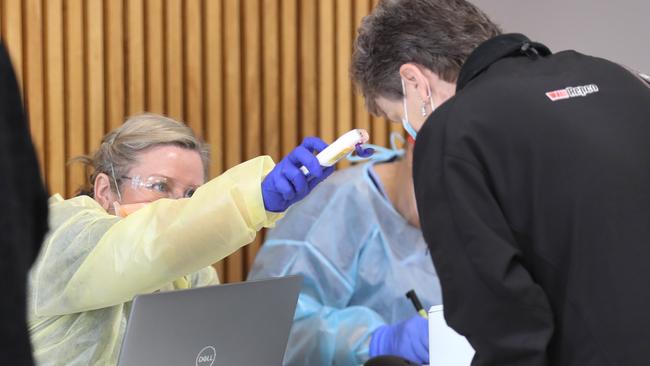Catherine Bennett: Mystery cases key to Victoria’s exit
Our new case numbers have come down and, while frustratingly they aren’t dipping into single digits consistently, the number that matters more in many ways is the number of so-called mystery cases, writes epidemiologist Catherine Bennett.
Twenty-one days under 20 — our new case numbers have come down and, while frustratingly not dipping into single digits consistently, this three-week trend under 20 is important.
This is especially so given we have a number of outbreaks running. Many of the numbers we have focused on each day have become harder to interpret over the last weeks as the second wave has been brought under control.
New case numbers themselves fluctuate so much when we are down in low double digits — it just takes one new household cluster to bump numbers up by 50 per cent, and to throw our rolling averages off track against the COVID-19 road map targets.
The message from the Premier and Chief Health Officer is decisions about the next steps in the road map will not just be tied to the hard number targets. The health department is only too well aware of how difficult it is to predict cases day to day in the tail of an outbreak, and the fact numbers themselves are not the all-important thing — it is the narrative that goes with them.

So what do we know about the story behind cases? This virus moves through populations by infecting clusters of cases. Most cases don’t infect anyone else (estimated to be 70 per cent in overseas studies), while most of the spread is attributed to 20 per cent or less of cases.
We know from the second wave what happens when the virus gets into settings where it can rapidly spread, whether high-risk workplaces, aged-care residences, or big households. Fortunately, many cases linked to an outbreak are already in isolation when their test results come back.
Some may have been in isolation before they developed symptoms even, and this means their infectious period may have largely been spent in quarantine.
This is a very good thing. A close contact of a known case, say a member of the same household, may have much of the contact tracing work overlap already completed for the other case in their home.
Some of the contacts will be the same and, likewise, already in isolation. These are less worrying because they are known, and some of the outbreak response work is already done.
Our cases now in metro and regional Victoria are mainly driven by clusters and outbreaks. We only have a handful of outbreaks, but the Chadstone cluster alone is spread across three separate main nodes including Frankston, Chadstone and Kilmore, and then the households of others exposed to the virus at Chadstone. This is taking ongoing effort to follow up those in quarantine to monitor for symptoms and do repeat tests, and in testing casual contacts linked to commercial venues.

So we cannot reduce this outbreak involving more than 50 people at multiple sites as if they count as just one seeding case, but nor should we add all 50 as though they have equal standing to other isolated cases.
The number that matters more in many ways is the number of so-called “mystery cases”. Some of these may be linked to outbreaks and the chain of transmission that ties them back to someone who might have been at Chadstone, for example, might be invisible.
This happens when the person who is the link back to a known outbreak doesn’t get tested, or never develops symptoms and doesn’t fit the group asked to test. They then infect someone else, and the transmission is silent from the public health team perspective, and the link from this last case back to the outbreak is lost.
The real risk here is more than one chain of transmission might have been missed, or other people might have also been infected from this intermediate link.
Unseen and unchecked transmission might be unlikely to start an outbreak immediately, but it could lead to a low level of transmission among and across households that then can cause new cases to suddenly pop up — like in NSW this week. This is why these unlinked cases are looked at so closely.
Our mystery cases have been sitting at below one a day for more than a fortnight, but have just returned to one or two a day this last weeks as these more recent outbreaks played out. I hope that’s a good sign these cases might be driven by these outbreaks, and they will disappear as the outbreaks are closed down. We will know in the next week or so.
Either way, these are the numbers we have to watch and which by their very nature are more of a worry if they creep above one or two a day more consistently.
So coming back to the numbers — daily counts are less important than the proportion of those that are already linked to outbreaks, or at least provisionally linked.
On Tuesday, 11 of the 12 new cases fell into that category. The number still “under investigation” at the time of report can include cases that go on to be linked, or those mystery cases, but on this occasion the one case under investigation is being investigated as a possible false positive.
This number is likely to capture cases from more complex situations where it is not immediately obvious they are linked to other cases, and may not necessarily have been in isolation. It also includes the all-important mystery cases.
The daily average for the cases under investigation has been sitting around five for four weeks now. This is reassuring, and perhaps a number that is more informative to watch each day as these current outbreaks are brought under control.
Catherine Bennett is chair in epidemiology at Deakin University
